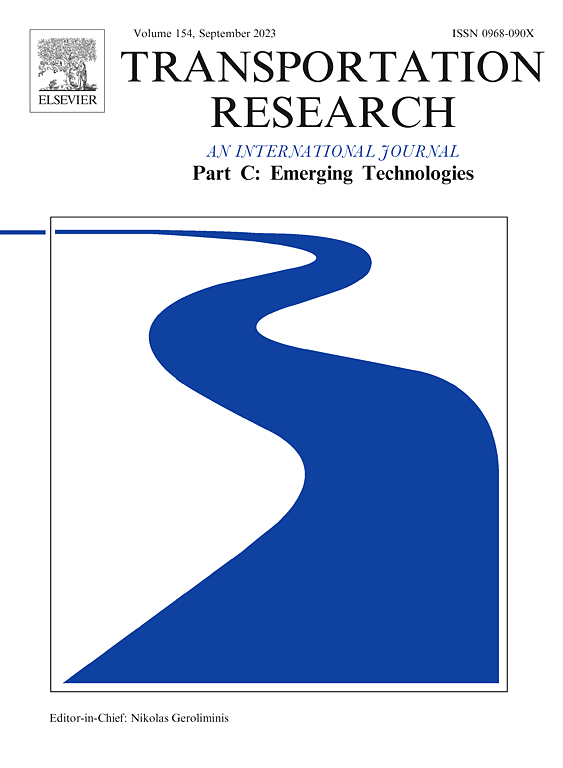Optimal operation strategy in the collaborative urban freight transport system with concept of capacity allocation
IF 7.6
1区 工程技术
Q1 TRANSPORTATION SCIENCE & TECHNOLOGY
Transportation Research Part C-Emerging Technologies
Pub Date : 2025-02-01
DOI:10.1016/j.trc.2024.104973
引用次数: 0
Abstract
Worldwide, urban freight transport demand has rapidly expanded. Collaborative freight transport service, which integrates existing public transport system into the freight transport service, would be a promising solution to solve such post-pandemic urban freight transport problem. While most of the previous research works on this topic considered the operation of the public transport service and freight delivery service separately, this paper would focus on how to determine coordinated operational strategies of the participating public transport and freight transport services in a cooperative regime. Specifically, the definition of the capacity allocation event is proposed to encourage more seamless freight movements at transfer hubs within the given limited temporal restrictions while considering both the travel delay for public transport passengers and all incurred operational costs for offering the collaborative freight transport service. To this end, we propose a multi-objective mathematical model to describe the operation design of the collaborative freight transport service, aiming to maximize the synchronized freight movement at transfer hub and minimize the incurred passenger travel delay and operational costs. A Multi-objective Bernstein Basis Differential Evolution (MOBDE) solution method, requiring no pre-determined control parameters, is employed to find the optimal solution efficiently. Finally, an illustrative example is presented to demonstrate the validity of the model formulation and efficiency of the solution method for the operation design of collaborative freight transport services.
求助全文
约1分钟内获得全文
求助全文
来源期刊
CiteScore
15.80
自引率
12.00%
发文量
332
审稿时长
64 days
期刊介绍:
Transportation Research: Part C (TR_C) is dedicated to showcasing high-quality, scholarly research that delves into the development, applications, and implications of transportation systems and emerging technologies. Our focus lies not solely on individual technologies, but rather on their broader implications for the planning, design, operation, control, maintenance, and rehabilitation of transportation systems, services, and components. In essence, the intellectual core of the journal revolves around the transportation aspect rather than the technology itself. We actively encourage the integration of quantitative methods from diverse fields such as operations research, control systems, complex networks, computer science, and artificial intelligence. Join us in exploring the intersection of transportation systems and emerging technologies to drive innovation and progress in the field.

 求助内容:
求助内容: 应助结果提醒方式:
应助结果提醒方式:


